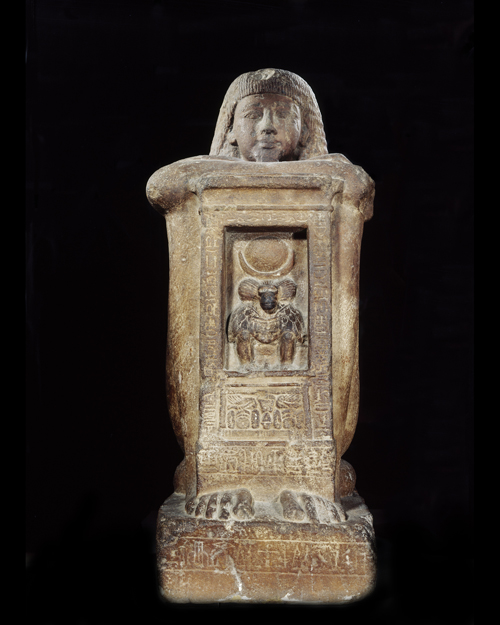
© 2001 Musée du Louvre / Georges Poncet
Probably from Abydos
New Kingdom, 19th dynasty, reign of Ramsses II, c.1279–1213 BC,
Quartzite
H.: 63.5 cm; W.: 23.8 cm; D.: 37 cm
Before him is a chapel to the god Thot, patron of scribes.
Department of Egyptian Antiquities, Musée du Louvre
(A 65)
The deceased is squatting on a cushion, back against a pillar, body wrapped in a cloak that exposes only head, arms, and feet. In front of him is a naos, a chapel with a grooved cornice holding a state of the god Thot in the form of a baboon crowned with a full and crescent moon. An offering table covered with food—birds and bread—is placed vertically in the lower part of the naos. On the pillar and the frame of the naos are inscriptions of offertory formulas to the gods Osiris, Upuaut, and Anubis, made by Kha, son of Montummin and Isetemheb, and royal scribe of the table of the Lord of the Two Lands. In a hymn to Osiris, Kha specifies that he performed numerous rites in the temple of Abydos. Cartouches of Ramesses II on his arm are related to one of his offices, since Kha was responsible for supplying the pharaoh’s palace. Although, strangely, the inscriptions make no mention of the god Thot, the sculpted depiction of the god’s animal had the same creative virtue. The deliberate difficulty of one of the inscriptions was designed to strike the reader and underscore the ostentatious learning of the deceased.